I made this video using my collection of images of fake flowers. The images were autocropped in Photoshop so that all the compositional choices were made by the computer. The audio is a midi version of "Steal My Sunshine" by Len, a pop song from 1995.
Thursday, December 3, 2009
Monday, November 30, 2009
dioramas
I'm currently researching dioramas as a form of analog virtual reality. Before anyone dreamed of CGI or virtual reality googles, dioramas allowed viewers to project themselves into a simulated space for purposes of entertainment or education. An image in three dimensions, the space inside a diorama functions like a complete world. To the imagination this space extends beyond the boundaries of its container. We enter it through our eyes and in some ways, it becomes more real that what is around it.
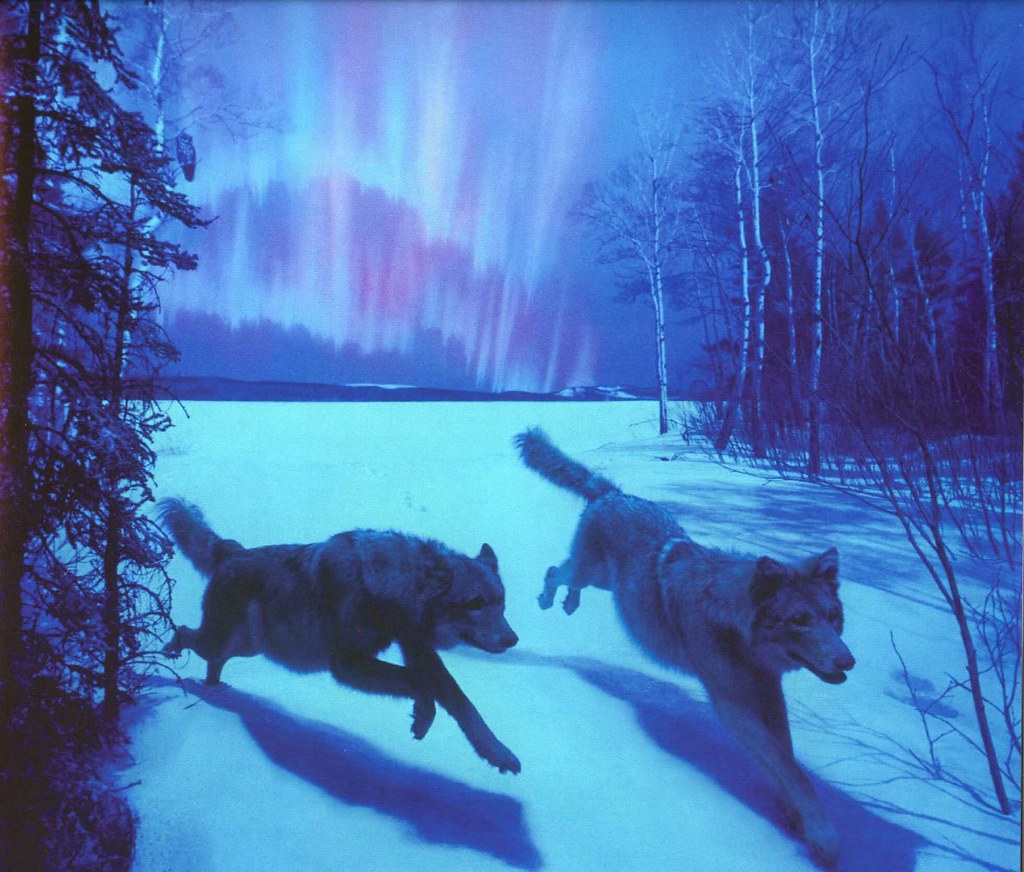
Grey wolf diorama from the American Museum of Natural History
Photographer Hiroshi Sugimoto described his first experience of the natural history dioramas as hallucinogenic. "When I first saw them I felt as if I'd taken drugs . . . Perhaps the whole world around me might be completely dead."
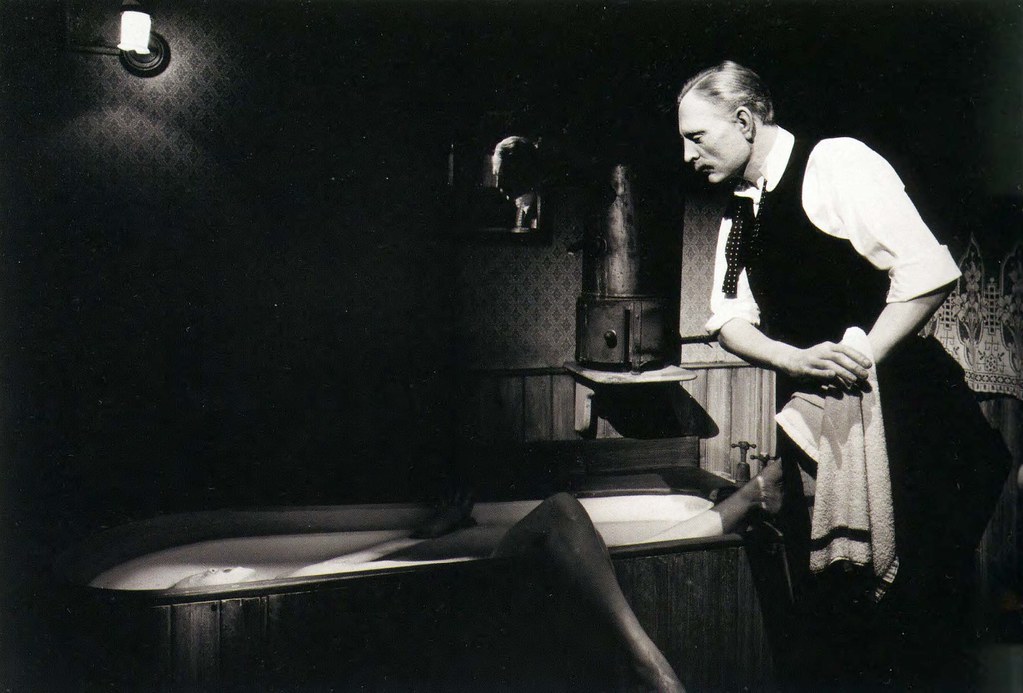
Photograph by Hiroshi Sugimoto

Grey wolf diorama from the American Museum of Natural History
Photographer Hiroshi Sugimoto described his first experience of the natural history dioramas as hallucinogenic. "When I first saw them I felt as if I'd taken drugs . . . Perhaps the whole world around me might be completely dead."

Photograph by Hiroshi Sugimoto
Sunday, November 15, 2009
pages are cabinets
Here are some images I've collected of instances where the page functions as a cabinet or container for a collection:
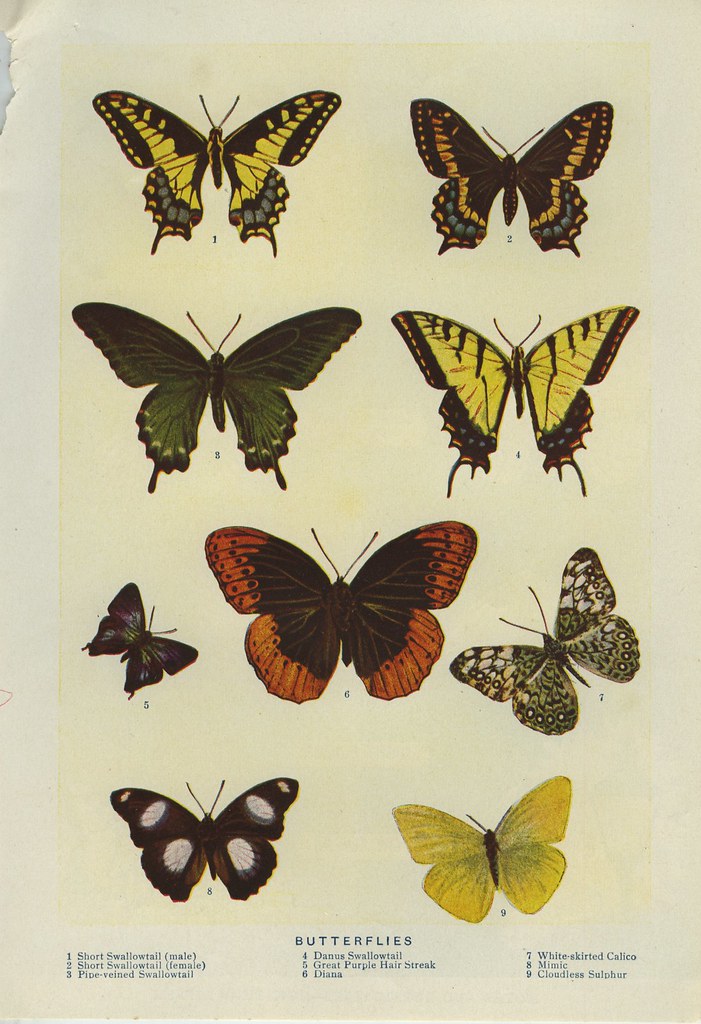
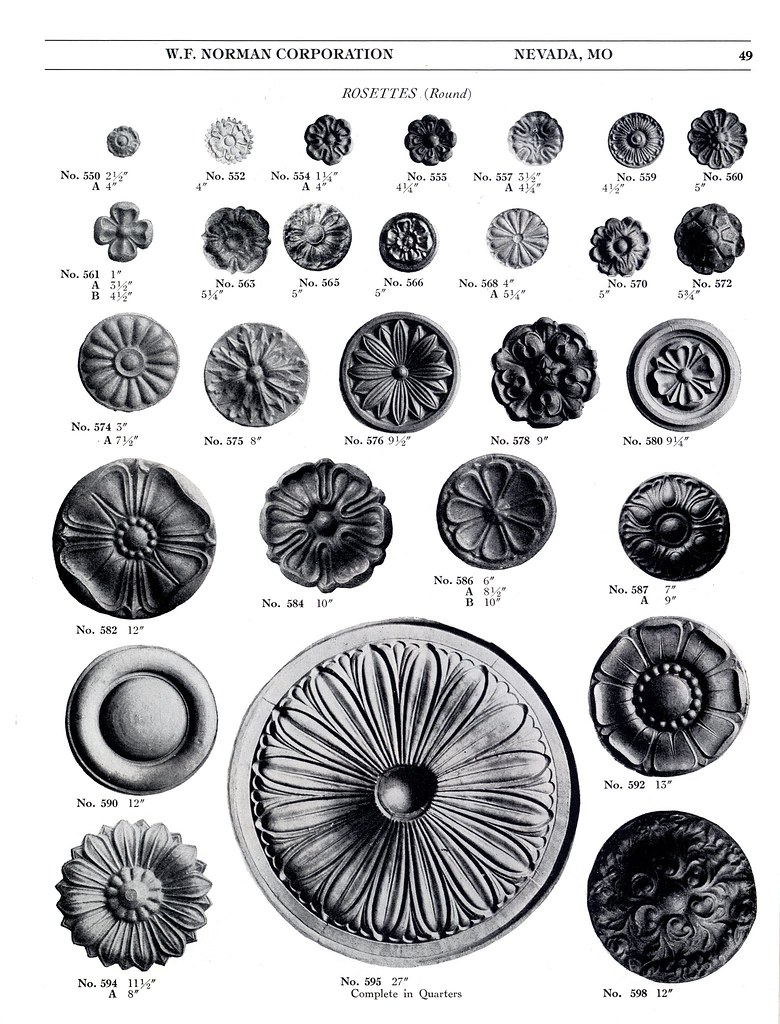


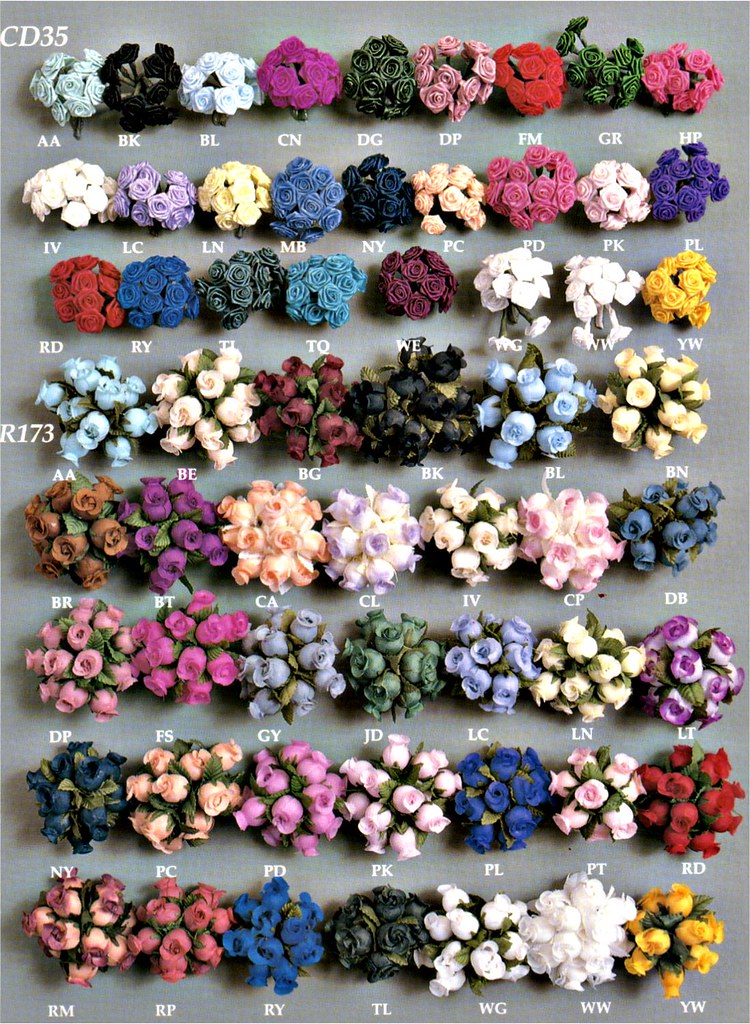
This method of presentation seems obvious at first, but there are interesting patterns at work here:
1. The objects are removed from context and placed in a neutral plane parallel to and doubling the page. The space is flat or very shallow.
2. The objects are scaled to fit within the page. Relative sizes are maintained within the collection.
3. They are organized by physical characteristics such as size, shape, or color.
4. Text, which can't exist within the same "reality" as the image, is given its own space (as in the case of the butterfly collection), made to fit (rosettes & scissors), or exists on another plane (fake flowers). I would argue that the last tactic, where text actually overlaps with the image, is possible only because the flower image is a photograph. With a graphic image, overlaid text would break the illusion that the image is an object that exists in space.





This method of presentation seems obvious at first, but there are interesting patterns at work here:
1. The objects are removed from context and placed in a neutral plane parallel to and doubling the page. The space is flat or very shallow.
2. The objects are scaled to fit within the page. Relative sizes are maintained within the collection.
3. They are organized by physical characteristics such as size, shape, or color.
4. Text, which can't exist within the same "reality" as the image, is given its own space (as in the case of the butterfly collection), made to fit (rosettes & scissors), or exists on another plane (fake flowers). I would argue that the last tactic, where text actually overlaps with the image, is possible only because the flower image is a photograph. With a graphic image, overlaid text would break the illusion that the image is an object that exists in space.
Saturday, November 7, 2009
more virtual collecting
Concerning the collections we're unaware we're making. Flickr automatically generates a list of the all the tags for the photos I've uploaded:

The size of the word corresponds to its frequency. (I store the documentation of my artwork on the site, which is why my name is so big.) It's a little odd for me to see this, because it totally exposes my interests and obsessions. The largest tags tend to be large, abstract concepts that indicate general areas of study (graphic design, nature, collection, etc.) The smaller tags, which might relate to only one or two images in my photostream, are even more personal and specific. Fantasy and escapism seem to be reoccurring themes (celebration, illusion, magic, nostalgia, party, spectacle, toy, whimsy.) Sex and gender are also prominent (boy, boy girl, female, gender, men, sex, women.) According to this list, I have an equal interest in hat and money.
For purposes of comparison, here are the tags from the flick accounts of two friends, Hannah Brancato and Payton Turner:



The size of the word corresponds to its frequency. (I store the documentation of my artwork on the site, which is why my name is so big.) It's a little odd for me to see this, because it totally exposes my interests and obsessions. The largest tags tend to be large, abstract concepts that indicate general areas of study (graphic design, nature, collection, etc.) The smaller tags, which might relate to only one or two images in my photostream, are even more personal and specific. Fantasy and escapism seem to be reoccurring themes (celebration, illusion, magic, nostalgia, party, spectacle, toy, whimsy.) Sex and gender are also prominent (boy, boy girl, female, gender, men, sex, women.) According to this list, I have an equal interest in hat and money.
For purposes of comparison, here are the tags from the flick accounts of two friends, Hannah Brancato and Payton Turner:


Sunday, November 1, 2009
Victorian Photocollage
I'm super excited about the Victorian Photocollage show at the Art Institute. I love how the formality of the portraits is subverted by the artists' whimsical hand. Here, family photographs are treated not as precious objects, but as media for artmaking. Through cutting and pasting, images of stern people in uncomfortable clothing are re-imagined as characters in surreal spaces. In one particularly strange image, family members become spiders and insects on a web.
The work feels contemporary, despite the fact that it was made by society ladies in the mid nineteenth century. It represents an non-neutral approach to framing a collection. Rather than simply present the photographs in a traditional album format, the women responsible for the collages created worlds around the images, thus injecting them with a highly personal narrative.

The work feels contemporary, despite the fact that it was made by society ladies in the mid nineteenth century. It represents an non-neutral approach to framing a collection. Rather than simply present the photographs in a traditional album format, the women responsible for the collages created worlds around the images, thus injecting them with a highly personal narrative.

Saturday, October 10, 2009
virtual orders
I'm thinking about the collections we keep that are immaterial/digital:
-songs
-lists
-facebook friends
-poems
-secrets
-email
-SPAM
-voicemail
-lists
-memory

Most interfaces essentially exist to order and display collections of information. Finder, Flickr, Facebook, del.icio.us, rss, etc. are the digital decendants of wunderkammer. In some ways, they retain the form and limitation of their ancestry (boxes containing items arranged according to the user's fancy.) Virtual space doesn't really correspond to physical reality, but we're accustomed to the metaphor. Though it now seems obvious, the graphical user interface (files and folders on the desktop) was a revolutionary development for Apple. I wonder if our interfaces will become less tied to the physical as we settle into virtual space. Or maybe there is something about the box and its contents that relates innately to the human brain.

"This book first arose out of a passage in Borges, out of the laughter that shattered, as I read the passage, all the familiar landmarks of my thought - our thought, the thought that bears the stamp of our age and our geography - breaking up all the ordered surfaces and all the planes with which we are accustomed to tame the wild profusion of existing things, and continuing long afterwards to disturb and threaten with collapse our age-old distinction between the Same and the Other. This passage quotes a ‘certain Chinese encyclopedia’ in which it is written that ‘animals are divided into: (a) belonging to the Emperor, (b) embalmed, (c) tame, (d) sucking pigs, (e) sirens, (f) fabulous, (g) stray dogs, (h) included in the present classification, (i) frenzied, (j) innumerable, (k) drawn with a very fine camelhair brush, (1) et cetera, (m) having just broken the water pitcher, (n) that from a long way off look like flies’. In the wonderment of this taxonomy, the thing we apprehend in one great leap, the thing that, by means of the fable, is demonstrated as the exotic charm of another system of thought, is the limitation of our own, the stark impossibility of thinking that."
-Foucault, The Order of Things
-songs
-lists
-facebook friends
-poems
-secrets
-SPAM
-voicemail
-lists
-memory

Most interfaces essentially exist to order and display collections of information. Finder, Flickr, Facebook, del.icio.us, rss, etc. are the digital decendants of wunderkammer. In some ways, they retain the form and limitation of their ancestry (boxes containing items arranged according to the user's fancy.) Virtual space doesn't really correspond to physical reality, but we're accustomed to the metaphor. Though it now seems obvious, the graphical user interface (files and folders on the desktop) was a revolutionary development for Apple. I wonder if our interfaces will become less tied to the physical as we settle into virtual space. Or maybe there is something about the box and its contents that relates innately to the human brain.

"This book first arose out of a passage in Borges, out of the laughter that shattered, as I read the passage, all the familiar landmarks of my thought - our thought, the thought that bears the stamp of our age and our geography - breaking up all the ordered surfaces and all the planes with which we are accustomed to tame the wild profusion of existing things, and continuing long afterwards to disturb and threaten with collapse our age-old distinction between the Same and the Other. This passage quotes a ‘certain Chinese encyclopedia’ in which it is written that ‘animals are divided into: (a) belonging to the Emperor, (b) embalmed, (c) tame, (d) sucking pigs, (e) sirens, (f) fabulous, (g) stray dogs, (h) included in the present classification, (i) frenzied, (j) innumerable, (k) drawn with a very fine camelhair brush, (1) et cetera, (m) having just broken the water pitcher, (n) that from a long way off look like flies’. In the wonderment of this taxonomy, the thing we apprehend in one great leap, the thing that, by means of the fable, is demonstrated as the exotic charm of another system of thought, is the limitation of our own, the stark impossibility of thinking that."
-Foucault, The Order of Things
Friday, October 9, 2009
o death
The National Museum of Mexican Art is my new favorite museum. I'm especially excited about the ofrendas a los muertos: stage-like altars to the dead.
 I bought a sugar skull with my name on it. At home, I added it to my mantelpiece collection of decorative-objects-with-vaguely-emotional-significance. Also in this collection:
I bought a sugar skull with my name on it. At home, I added it to my mantelpiece collection of decorative-objects-with-vaguely-emotional-significance. Also in this collection:
-praying hands
-large eyed kitten
-virgin mary
-antique portuguese teacup & saucer
-gnarled root
In my first post, I wrote about collecting to fulfill an emotion need. People collect for an variety of reasons, but I think my main motivation is a desire to see my identity and experience reflected in the objects around me. My stuff is my self in a way. I've never been the kind of person to buy things that are generic and practical. I need style and whimsy to feel like an individual.
 Additionally, I suspect that all collecting involves a denial of death. By linking my identity to objects, I become immortal. I might die, but my stuff never will. When my grandmother was dying, she bought sewing patterns. Judging from the boxes we found in her room, she was planning to make hundreds of dresses someday.
Additionally, I suspect that all collecting involves a denial of death. By linking my identity to objects, I become immortal. I might die, but my stuff never will. When my grandmother was dying, she bought sewing patterns. Judging from the boxes we found in her room, she was planning to make hundreds of dresses someday.
Of course, everything is a spectrum:
 I bought a sugar skull with my name on it. At home, I added it to my mantelpiece collection of decorative-objects-with-vaguely-emotional-significance. Also in this collection:
I bought a sugar skull with my name on it. At home, I added it to my mantelpiece collection of decorative-objects-with-vaguely-emotional-significance. Also in this collection:-praying hands
-large eyed kitten
-virgin mary
-antique portuguese teacup & saucer
-gnarled root
In my first post, I wrote about collecting to fulfill an emotion need. People collect for an variety of reasons, but I think my main motivation is a desire to see my identity and experience reflected in the objects around me. My stuff is my self in a way. I've never been the kind of person to buy things that are generic and practical. I need style and whimsy to feel like an individual.
 Additionally, I suspect that all collecting involves a denial of death. By linking my identity to objects, I become immortal. I might die, but my stuff never will. When my grandmother was dying, she bought sewing patterns. Judging from the boxes we found in her room, she was planning to make hundreds of dresses someday.
Additionally, I suspect that all collecting involves a denial of death. By linking my identity to objects, I become immortal. I might die, but my stuff never will. When my grandmother was dying, she bought sewing patterns. Judging from the boxes we found in her room, she was planning to make hundreds of dresses someday.Of course, everything is a spectrum:
Subscribe to:
Posts (Atom)